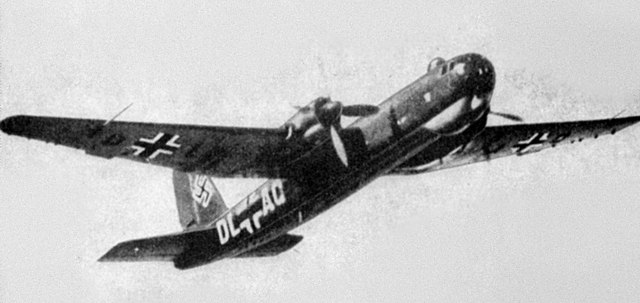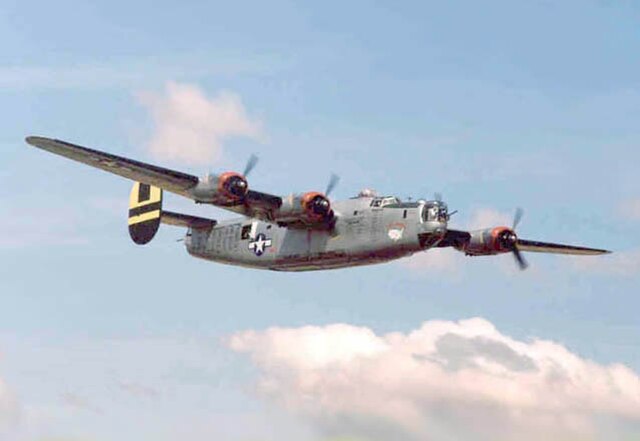The Heinkel He 177 Greif (Griffin) was a long-range heavy bomber flown by the Luftwaffe during World War II. The introduction of the He 177 to combat operations was significantly delayed, by both problems with the development of its engines and frequent changes to its intended role. Nevertheless, it was the only long-range, heavy bomber to become operational with the Luftwaffe during the war. The He 177 had a payload/range capability similar to that of four-engined heavy bombers used by the Allies in the European theatre.
Heinkel He 177 Greif
A later DB 610 "power system" which equipped the He 177A-5. The DB 606A/B powerplants were similar in configuration, with outermost "pair" of engine mount forgings not shown.
Portside view of a DB 605 engine in a Bf 109G's nose - the visible engine mount forging was similar to what each side of the DB 606/610 used, along with the "power system's" special centreline mounting unit.
He 177A-5 tail gun position, with 20mm MG 151 cannon and bulged upper glazing for upright gunner's seating.
Heavy bombers are bomber aircraft capable of delivering the largest payload of air-to-ground weaponry and longest range of their era. Archetypal heavy bombers have therefore usually been among the largest and most powerful military aircraft at any point in time. In the second half of the 20th century, heavy bombers were largely superseded by strategic bombers, which were often even larger in size, had much longer ranges and were capable of delivering nuclear bombs.
USAAF B-29 Superfortress, a heavy bomber.
The British produced Short Bomber
The Douglas B-18 Bolo on take off
The USAAF B-24 Liberator








